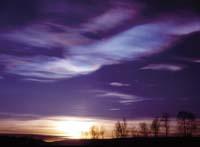The ozone layer, weaker than ever in the Arctic

This spring, the loss of the ozone layer over the Arctic has been the highest in history, according to the World Meteorology Organization (WTO). The secretary general of this organization, Michel Jarraud, has announced that the situation shows that the stratosphere continues to affect substances released by human activity.
In fact, the ozone layer is located in the stratosphere, 15-35 km from the terrestrial surface, and filters the ultraviolet B (UVB) radiation from the Sun. In the 1970s, scientists found that some industrial gases, such as chlorofluorocarbons and halons, destroyed the ozone layer. Although no measures were initially taken by politicians and decision-makers, 29 countries signed the Montreal Protocol in September 1987. Through this protocol they pledged not to use the gases that destroy the ozone layer, committing later to other 162 countries.
However, these gases have not disappeared, the WTO estimates that only 10% of what would be necessary to reach the levels of 1980 has disappeared. Therefore, its influence is still perceived and, in addition, in the Arctic this year has been more accused than ever. In fact, although in winter the temperature of the land surface has been higher than normal, the stratosphere has been colder than normal. The problem is that if the temperature of the stratosphere is less than -78 °C clouds occur in which the reactions turn the gases into harmful for ozone.
This situation is usually more serious than anywhere in Antarctica, but this year in the Arctic something similar has happened. Researchers suspect that climate change may be related to this, so a special effort is being made to investigate the relationship between ozone loss and climate change. In the words of Michel Jarraud, “the loss of ozone in 2011 has shown us that in the coming years we must take close care of the state of the Arctic.”
Buletina
Bidali zure helbide elektronikoa eta jaso asteroko buletina zure sarrera-ontzian











